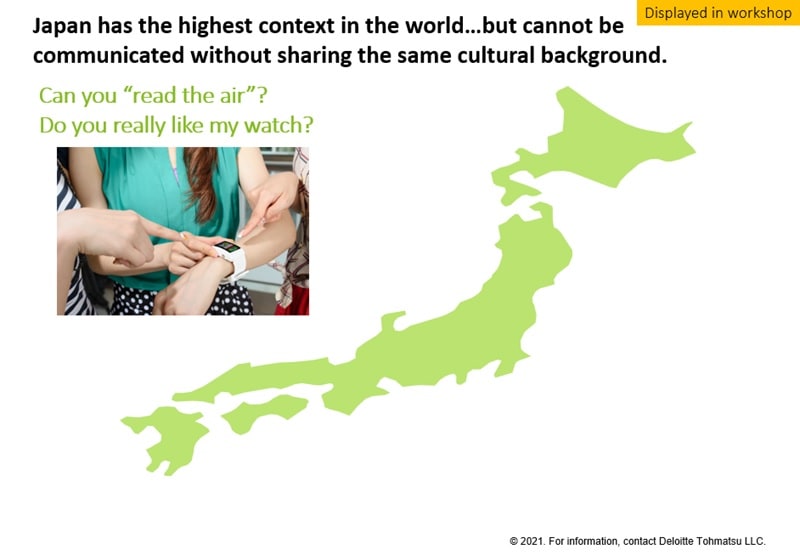Different is the new Better - Thoughts on Japan’s 70th anniversary with UNESCO - Bookmark has been added
*This is an English translation of the D-NNOVATION article issued by Deloitte Tohmatsu Group on July 30, 2021. If there is any discrepancy between the Japanese version and the English translation, the Japanese version shall prevail.
UNESCO anniversary and conventions on cultural diversity
July 2nd marked Japan’s 70th anniversary with UNESCO (United Nations Educational, Scientific and Cultural Organization) since joined on July 2, 1951(*1) .

UNESCO is probably best known for World Heritage Sites, while it focuses on international cooperation in 5 areas - Education, Natural Sciences, Social and Human Sciences, Culture, and Communication & Information. It has a wide range of activities from SDG related initiatives such as strengthening quality education worldwide, to ratifying conventions on cultural diversity.
“The Convention on the Protection and Promotion of the Diversity of Cultural Expressions” has been ratified by almost 150 countries and associations around the world as of 2020, but not by Japan. (*2) Some say that it is difficult due to lack of cultural diversity in Japan, but is that really true – Is Japan lacking in cultural diversity?
Why “Difference” turn into “Gap”
Deloitte Tohmatsu Group empowers work environment where visible and invisible diversity are included and respected. To value “culture” -as one of the invisible diversities, we have been conducting “Cultural Inclusion Workshop” across all business lines within the group. The workshop is aimed at having all participants reflect on what culture and value mean in business, then why “differences” become “gap/misunderstanding”, and what we all should do to develop cultural quotient. While it uses various frameworks from comparative culture theories, we discuss a lot about various possible culture gap episodes in business and deep dive into its structure and what should be done.
For example, when you are explaining about a project to a team member and they say, “I don’t understand,” how would you feel? If you are from “low-context” culture where it is said to be communications are more direct, you might say, “Okay, I will explain one more time,” to clarify. It may take more time, but it is said that this may lead to less “gap/misunderstanding” since it will be explained until all members get on the same page.
On the other hand, what if you are from “high-context” culture where mutual understanding is pretty much taken for granted and communications tend to be indirect? Once you hear “I don’t understand,” you may unconsciously try to understand the implied message as “Your explanation is very confusing,” so you might answer “I am sorry (and a little offended).” In this case, you team member may have just wanted a clarification, but end up with your apology. Language is not the issue here, but these kinds of “cultural differences” may lead to “gap/misunderstanding,” which may influence the trust and relationships since you may feel like “we cannot get along, since that person does not really get what I am saying.”
The workshop discusses about other cultural perspectives of day-to-day business scenes, such as evaluation and building trust etc., to deep dive into cultural differences and structures, and reflect on one’s culture and values as inventory work. The goal is to come up with an action plan to leverage the cultural differences as organization’s source of diversity and strength by connecting the dots with the current challenges and issues.

Different is the new Better
While there are various initiatives in Japan to ratify convention on cultural diversity mentioned earlier, but the statement that Japan lacks in cultural diversity, is not necessarily true.
In the cultural inventory part during the workshop, we can see that culture/value ranges do vary greatly depending on various factors -including their jobs, job ranks, and previous jobs etc., even if the participants are all Japanese speakers. Some of the post-session comments say “I realized that there are various values and we are already diverse, even within the same team and the same job rank,” and “Leveraging differences as our strength is imperative for us to provide professional service from diverse perspectives.”
The Agency for Cultural Affairs, Government of Japan, defines “culture” from many components such as customs, ethnicity, language, religion, beliefs, but “values” is said to be one of the biggest factor(*3). Values are combination of one’s differences, experiences, where you are from, relationships, environment, and so on -and eventually play a crucial part in defining “what is good and what is normal”.
Each person has their own values and they make up an important part of culture. Therefore, you can also say that all cultures are already “diverse” and full of “differences.” By embracing those differences as they are, you may have a new perspective, which may lead to further innovation and creativity. This is the core concept of “Diversity and Inclusion,” where differences become values and businesses and organizations become stronger, and the better.
<Source>
(*1): UNESCO: 日本のUNESCO加盟70周年を記念して (In Japanese only)
(*3): Agent for Cultural Affairs, Government of Japan 「文化芸術振興の意義」 (In Japanese only)
About the Author

Diversity, Equity & Inclusion Team
"Diversity, Equity, & Inclusion (DEI)" has been one of the key management strategies at Deloitte Tohmatsu Group -to drive the organizational and client growth to be leveraged for social impact. DEI Team is a group of DEI professionals to closely work with the top management -to design and implement a wide range of initiatives to turn various "differences" into a source of “strength”. The team is also committed to make an impact that matters in fostering further inclusive society. (See further details from HERE).

